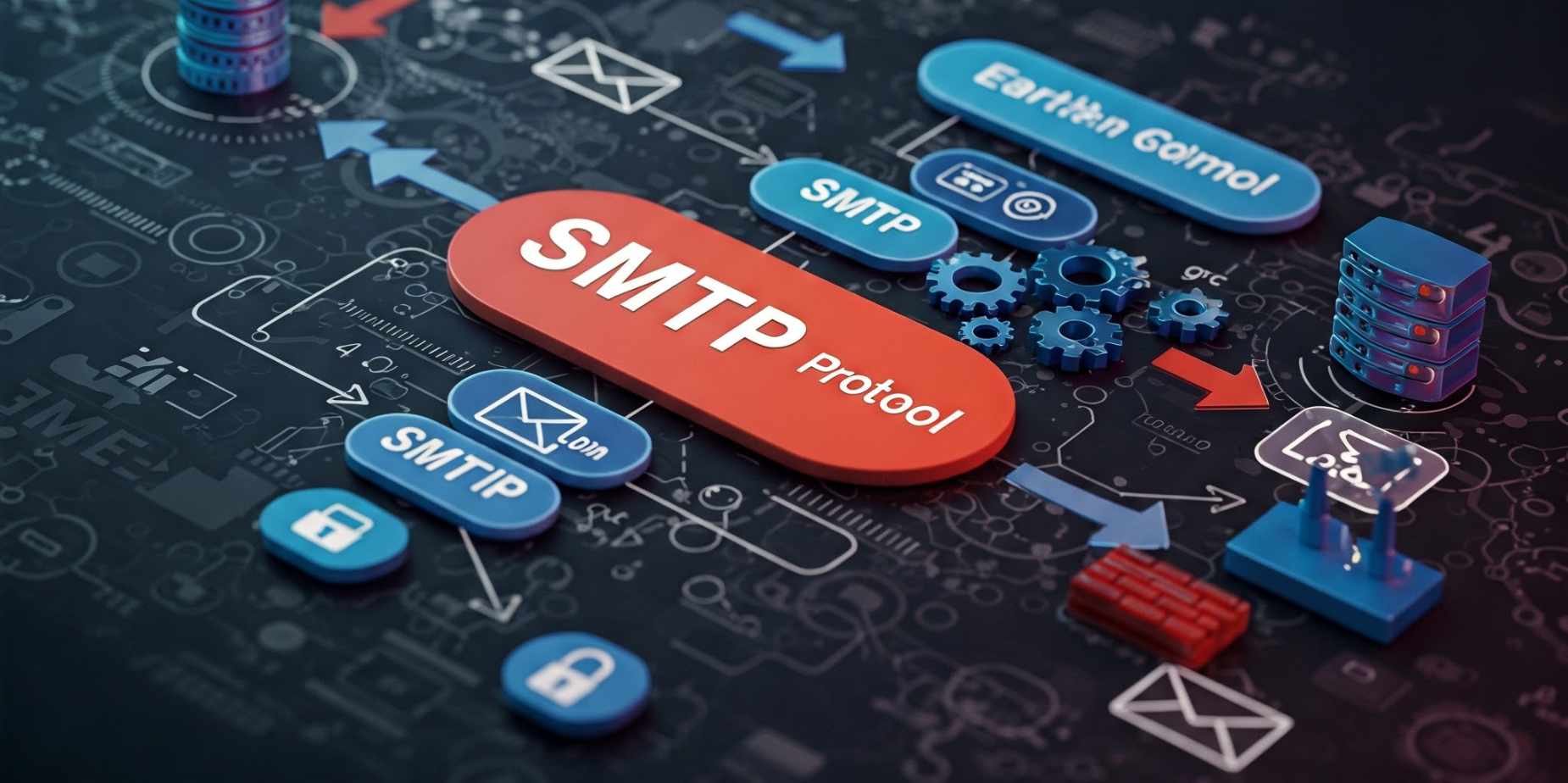Learn 5 proven strategies to write emails that convert. Improve open rates, and click-throughs with…

What is Simple Mail Transfer Protocol (SMTP): Guide for 2025
Table of Contents
What is the Simple Mail Transfer Protocol (SMTP)?
The Simple Mail Transfer Protocol (SMTP) is the standard protocol for sending emails across the internet. Think of it as the postal service for electronic mail. It’s the set of rules that email servers use to communicate and deliver messages. While you, as a user, might interact with email through a client like Gmail, Outlook, or Thunderbird, behind the scenes, SMTP is working to ensure your messages reach their intended recipients.
How SMTP Works:
SMTP operates using a “store and forward” mechanism. Here’s a simplified breakdown of the process:
-
Email Composition: You compose your email using an email client (like Gmail or Outlook) and click “send.”
-
Client to Mail Server (MTA): Your email client connects to your outgoing mail server, also known as a Mail Transfer Agent (MTA). This MTA is responsible for handling the sending of your email. Your email client connects to your designated SMTP server using port 25 (default), 587 (for secure submission), or 465 (for SSL encryption).
-
MTA to MTA (Relaying): The sending MTA checks the recipient’s email address. If the recipient is on the same domain (e.g., both sender and recipient are @example.com), the MTA delivers the email directly to the recipient’s mail server. If the recipient is on a different domain, the sending MTA relays the email to another MTA closer to the recipient’s mail server. This relaying process might involve multiple MTAs working together to get the email closer to its destination.
-
MTA to MDA (Delivery): The final MTA, the one responsible for the recipient’s domain, delivers the email to the recipient’s Mail Delivery Agent (MDA). The MDA stores the email in the recipient’s mailbox.
-
Recipient Access: The recipient can then access their mailbox using an email client (using protocols like POP3 or IMAP) and read the email.
Key Features of SMTP:
- Text-Based: SMTP uses plain text for communication, making it relatively simple to implement and debug.
- Connection-Oriented: SMTP establishes a connection between the sending and receiving mail servers before transmitting the email. This ensures reliable delivery.
- Store and Forward: As mentioned earlier, SMTP uses a store and forward mechanism, allowing emails to be queued and delivered even if the recipient’s mail server is temporarily unavailable.
- Relaying: SMTP facilitates the relaying of emails between different mail servers, enabling email delivery across the internet.
Limitations of SMTP
- No Built-in Encryption: Basic SMTP does not include encryption, making it vulnerable to interception. However, extensions like STARTTLS and SMTPS address this issue by enabling encrypted communication.
- Spam and Security Concerns: SMTP’s open nature makes it susceptible to spam and phishing attacks. Techniques like SPF (Sender Policy Framework), DKIM (DomainKeys Identified Mail), and DMARC (Domain-based Message Authentication, Reporting, and Conformance) have been developed to combat these issues.
SMTP vs. Other Email Protocols
While SMTP is used for sending emails, other protocols handle email retrieval:
- POP3: Downloads emails from the server to the local device, typically deleting them from the server afterward.
- IMAP: Synchronizes emails between the server and the client, allowing access from multiple devices.
Security Considerations:
While SMTP itself doesn’t inherently provide strong security, several extensions have been developed to address security concerns:
- STARTTLS: This extension allows SMTP connections to be encrypted using TLS (Transport Layer Security), protecting the email content from eavesdropping.
- SMTP Authentication: This mechanism requires users to authenticate with a username and password before sending emails, preventing unauthorized use of the mail server.
SMTP in Everyday Use
If you send or plan to send large volume emails, you might need to consider our dedicated SMTP server. Whenever you send an email from a personal or business account, SMTP is working behind the scenes to ensure it gets to the right inbox. It’s used by:
- Email clients (e.g., Microsoft Outlook, Mozilla Thunderbird)
- Web-based services (e.g., Gmail, Yahoo Mail)
- Automated systems for sending notifications, alerts, and newsletters
Common SMTP Errors
- 550 – Requested action not taken: This often indicates that the recipient’s server has blocked your message, possibly due to spam filters.
- 421 – Service not available: The server is temporarily unavailable, often due to maintenance or overload.
- 535 – Authentication failed: The server couldn’t verify your credentials, possibly due to incorrect login details.
In Summary:
SMTP is the foundational protocol for sending emails across the internet. It’s a robust and reliable system that ensures your messages reach their intended recipients. While hidden from the average user, understanding the basics of SMTP can be helpful in troubleshooting email issues and appreciating the complex infrastructure behind modern email communication.


